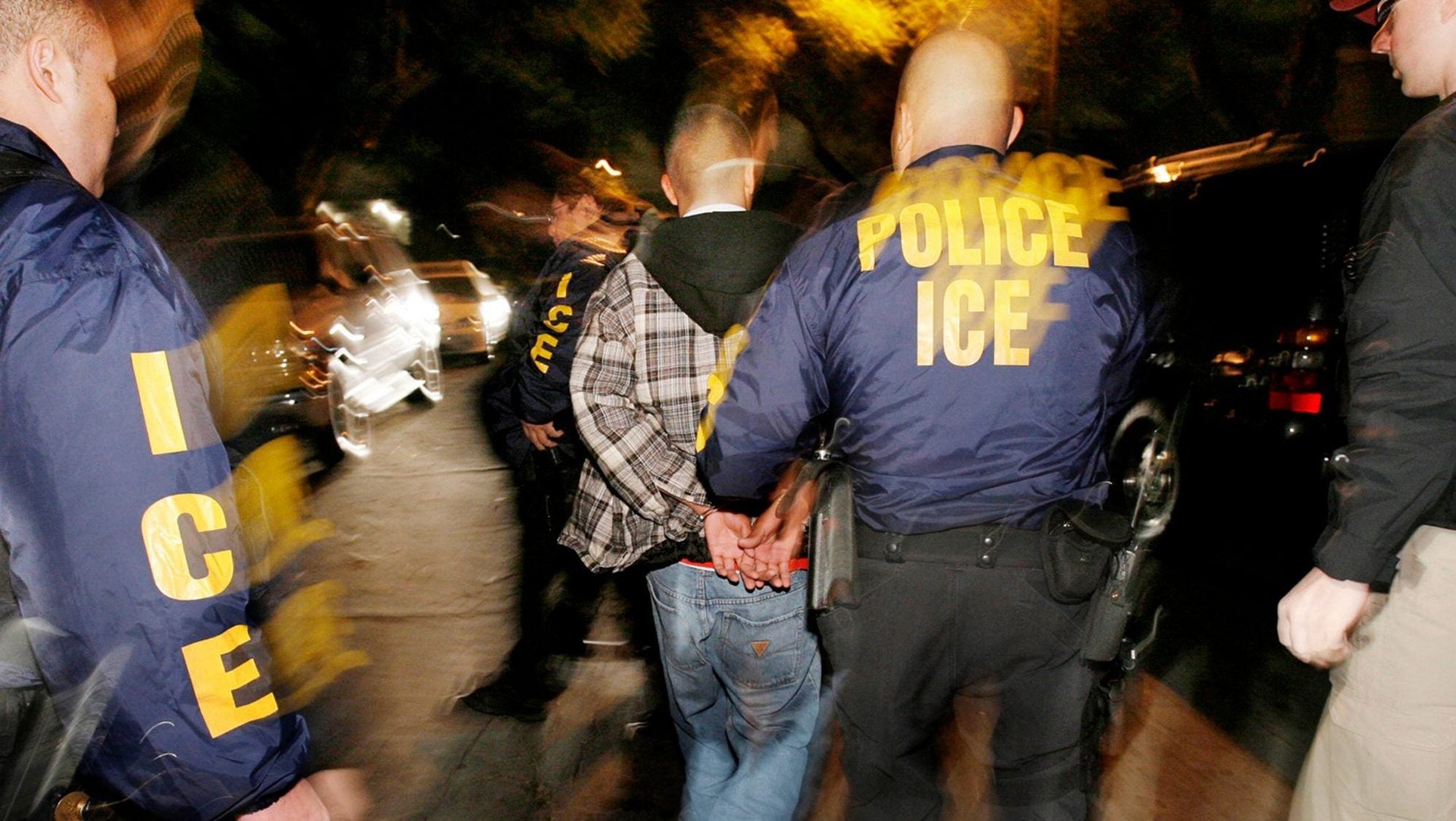Immigrants’ chances of getting arrested depend on where they live in the US
Donald Trump has been extremely effective at enforcing immigration laws—but only in some parts of the US.


Donald Trump has been extremely effective at enforcing immigration laws—but only in some parts of the US.
Arrests by Immigration and Customs Enforcement have risen dramatically in some jurisdictions. But in other places, “sanctuary” policies, or local measures designed to protect immigrants, are slowing them down, according to a report released by the Migration Policy Institute, a Washington, DC-based think tank, on Tuesday.
The federal government is officially in charge of enforcing immigration policy, but over the years it’s enlisted local authorities to help by transferring immigrants who land in state prisons and local jails to ICE. These days, though, officials in many jurisdictions are feeling less cooperative. So, ICE arrests have gone up much faster in some areas than in others. Here are the top and bottom three ICE field offices:
(The city names refer to the location of ICE field offices, whose geographic scope can vary from a single metro area to several states.)
The disparity of local policies has created what MPI’s Muzaffar Chishti, one of the report’s authors, calls a “Swiss cheese of immigration enforcement.” In some areas of Georgia or Tennessee, for example, an undocumented immigrant who’s stopped by police for missing a stop sign can be sent to ICE and eventually deported. In places such as Chicago or San Francisco, an individual who’s been arrested for more serious crimes doesn’t have to worry about being transferred to the federal government by local officials.
“The fate of an unauthorized or otherwise removable immigrant depends on where he is apprehended, not on what he has done,” Chishti said during a presentation of the study.
MPI also looked at the overall numbers of arrested immigrants by how they came into ICE custody during Donald Trump’s first 135 days in office—the group could only obtain data for that period through a Freedom of Information Act request. It shows that immigrants transferred from local jails accounted for the bulk of immigrants picked up by ICE, but that share has shrunk from previous years. Meanwhile, federal officials relied more on arrests they made themselves.
Trump is constrained by how much he can increase both types of arrests in the future. Though he has the authority to order ICE agents to take in as many immigrants as are in the US illegally, he doesn’t have the funds to do that. Despite his zeal to enforce immigration laws, arrests only went up slightly faster in the stretch analyzed by MPI than during the same period the previous year, when Barack Obama was president: 24% vs. 21%.
Arrests that resulted from transfers by local authorities grew slightly slower, by 69% compared with 70% the previous year. Although the majority of communities in the US are not sanctuary jurisdictions, some of the country’s biggest cities—and the whole state of California—are. They make up a large swath of the undocumented immigrant population. Consider the number of immigrants referred by local authorities to ICE’s Los Angeles office. It covers the LA metro area—home to about one million undocumented residents alone—and a few other surrounding counties, but it only got about 2,300 transfers during Trump’s early months.
All of the above means that Trump is unlikely to snatch the title of “deporter in chief” from Obama. Although the former president softened his approach to immigration enforcement during his later years at the White House, he got that moniker from immigration advocates who condemned the record level of deportations at the start of his administration.